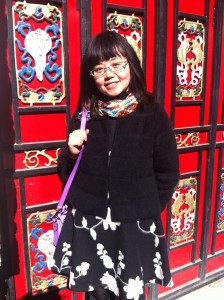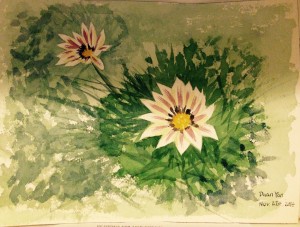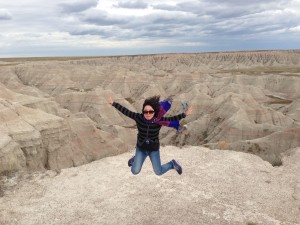
In February 2015, a new anthology, Expanding the Circle: Creating an Inclusive Environment in Higher Education for LGBTQ Students and Studies, was published by SUNY Press. Chapter 12, “LGBT Bullying in Schools: Can School Policies Affect Climate?” was authored by Erik Green, 5th year PhD Student. While Erik believes the content of the chapter is fairly interesting, the process by which it came to be published seemed even more interesting to share with the Department.
By Erik Green
My journey to publication actually started my very first quarter, back in Fall 2010, with a final paper for Rod Ogawa’s EDUC 235 (Intro Methods). Around the same time, a former acquaintance of mine was launching the LGBTQ Policy Journal at Harvard. He solicited me for an article, and I figured this would be a great opportunity. Rod agreed, and allowed me to tweak the final assignment slightly so that I could create a submission for the journal.
The paper itself was constructed within the context of a series of recent, high-profile LGBT teenage suicides (such as Tyler Clementi). (For reasons I assume to be privilege-based, the cases tended to focus primarily on gay men). The Gay, Lesbian & Straight Education Network (GLSEN) has been tracking anti-LGBT violence in schools via their annual National School Climate Survey. In Rod’s class, I was considering the methods utilized by GLSEN, so it made sense to expand outward from there for my final project.
One aspect that intrigued me was that information was included regarding whether schools had comprehensive anti-bullying policies (that is, ones that explicitly include gender identity and sexuality as protected categories) or just a generic statement. There was a strong correlation between schools with comprehensive policies and aspects of a positive school environment, with relatively little improvement in school environment for schools with generic policies over those with no policy at all. However, there was no indication that any sort of research had been done to see if these relationships were causal. Which came first – did the positive environment tend to lead to comprehensive policies, or did implementing a policy have any direct affect on environment?
For my paper I created a framework to outline the question, then created a case for future research to address this hypothesis directly. For class, I included an addendum that explained how I, personally, would carry out that kind of research project, if I were to pursue it further.
It took ten months and some badgering for me to receive a reply about the submission. (It wasn’t picked up, but I take this as a sign that this wasn’t the right publication to be involved with anyway). In the intervening time, I decided against traveling to AERA, and instead went to a conference in March in San Francisco called “Expanding the Circle: Creating an Inclusive Environment in Higher Education for LGBTQ Students and Studies”. My work really sits outside the traditional fields of Education, and so I’ve always personally found it more useful to attend other conferences. The conference was interesting, if a little Student Affairs focused, and I was glad I attended – and it turns out there were some future opportunities to be presented as well.
In May, one of the organizers of the conference, John Hawley, solicited submissions for a new book he wanted to be put together. While I didn’t present at the conference, my article seemed to fit the theme perfectly, so I shook the dust off of it, did some editing, and sent it along in December 2011, not expecting much. To my surprise, John liked the article and wanted to include it.
John then started shopping around for a publisher. As is wont to happen in these situations, there’s a lot of down time where you don’t hear anything. In November of 2012, the manuscript was submitted to Johns Hopkins. Another year passed without any word – I figured the project was dead – until suddenly, in October of 2013, I got an email saying that State University of New York had picked up the manuscript and was publishing it. Contributor Release forms were sent and signed, bios were updated. A year later, the book was being printed, my advance copy arrived, and it’s now fully available electronically and in print. The book has also been getting some press, including a review in Inside Higher Ed.
So it is that four years later, a term paper metamorphosed into a sole authorship chapter in an anthology. What do I see as the morals from this story? First of all, never be afraid to work with a professor and create a final project that best fits your needs. In my experience, the professors are more than flexible when it comes to doing the writing that will be the most advantageous to you and your research. Next, always be on the lookout for publishing opportunities – you never know when they will present themselves. And on a related note, don’t be afraid to put your writing out there. A term paper from my first year may not exemplify the most brilliant writing I’ve ever done in my life, but I’m proud that it was published, and there’s something insanely gratifying about holding a book and getting to leaf to the Chapter with your name on it. And finally, never underestimate the “pipeline” effect. It may very well take 4-5 years before your writing finally finds a publication home, and it’s never too soon to start that process!



